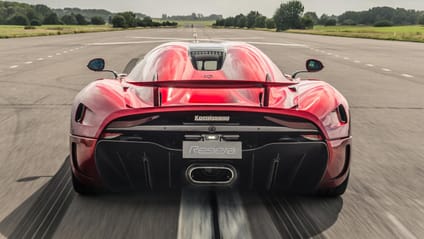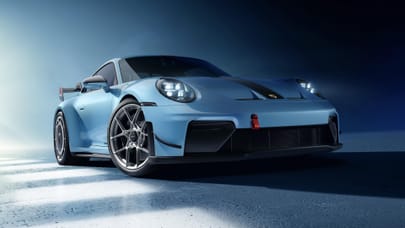
Here's a very brief history of Koenigsegg's hypercars
Take a short walk through Koenigsegg's punchy car history


From somewhat humble beginnings, Koenigsegg has grown into something a bit special. An innovator, with the world’s rich queuing up to buy its multi-million pound, meticulously crafted, awesomely rapid hypercars.
Have a look back over some of Koenigsegg's rather significant - and significantly fast - milestones.
Advertisement - Page continues below1996: Koenigsegg CC Prototype

Christian von Koenigsegg (who shall henceforth be known as CvK) founded the company that bares his name in 1994, when he was 22 years old (if that doesn’t make you feel wholly inadequate, nothing will). It took CvK & co. two years to finish their first car, which used an unmodified 4.2-litre Audi V8.
And it’s not dissimilar to the cars it still makes. The hallmarks are all there: the dihedral doors, the removable roof panel and wrap-around windscreen, extensive use of carbon. Yeah the proportions are a bit off, but this was the Nineties.
2002: Koenigsegg CC8S

Koenigsegg’s first proper production car, or so it says. First orders were taken at the Paris Motor Show in 2000, and the six cars Koenigsegg went on to build were delivered in 2002 and 2003. The engine was loosely based on a Ford V8, but comprehensively reworked by the Swedes for a total output of 655bhp.
Advertisement - Page continues below2004: Koenigsegg CCR

The 806bhp CCR has different bodywork, bigger tryes and brakes, an upgraded chassis and revised suspension. Koenigsegg built 14 in all. Its 241mph run at Nardo in February 2005 would have taken the McLaren F1's world production car speed record had more been produced. As it turned out, Bugatti took the honours with the Veyron later that year.
2006: Koenigsegg CCX

Koenigsegg three-point-oh. A completely new car, with very few components carried over – and that’s including the Ford-derived V8 that had, until the CCX, powered all production Koenigseggs. Built to satisfy international safety and emissions regs, the CCX had a raised roofline and expanded chassis to satisfy the Americans.
The CCX Edition, of which two were built, added power, aero and trim, and the CCXR was tuned to run on bioethanol (for 1,018bhp). Then came the CCXR Trevita, which was finished in a special coated carbonfibre. Again, just two were built.
Rounding out the CCX line was the two-off Special Edition – more and better, obviously.
2007: Koenigsegg CCGT

This is a particularly interesting one. The story goes that CvK designed his early cars to be compatible with ACO GT1 regulations, which at the time called for a maximum 2.0m width, and that the cockpit should occupy at least 70 per cent of that width. 20 would need to be sold for homologation. CvK wanted to do Le Mans, and the CCGT was the car built for the task.
The CCGT was based on the CCR, but had a few CCX bits. Before it had a chance to race, the regulations were changed, carbon monocoques were outlawed, and the homologation limit steadily rose to 350 cars a year. Thus, the CCGT never turned a wheel in anger. Shame.
2010: Koenigsegg Agera

And so arrives the Agera, and all of the (many) editions it spawned. The standard car arrived in 2011, with its 5.0-litre turbocharged engine (developed in-house), seven-speed paddleshift gearbox and even cleverer aero (all the wheels are individually designed, and, says Koenigsegg, have a measurable impact on downforce).
The R arrived a year later with more power and the biofuel capabilities of the CCXR. The S had all the extra stuff fitted to the R, but was specifically for countries where you can’t buy E85.
Then came the One:1, with its 1hp to 1kg power to weight ratio - the car with which Koenigsegg hoped to set a new ‘Ring record - the slightly friendlier RS, and the Final – the last of the line. The Agera RS of course, is now officially the world's fastest car, thanks to a 277.9mph run on a closed road in Nevada...
Advertisement - Page continues below2016: Koenigsegg Regera

Haven’t read our exclusive first drive yet? Click these blue words and read the full story. In the simplest of terms, this is a 1,479bhp, 1,465lb ft, 250mph hybrid hypercar with a deeply clever single-speed transmission. The most mind-blowing stat? 90-155mph in 3.2 seconds. Not having to change gear does that for ya...
Trending this week
- Car Review
BMW 1 Series







